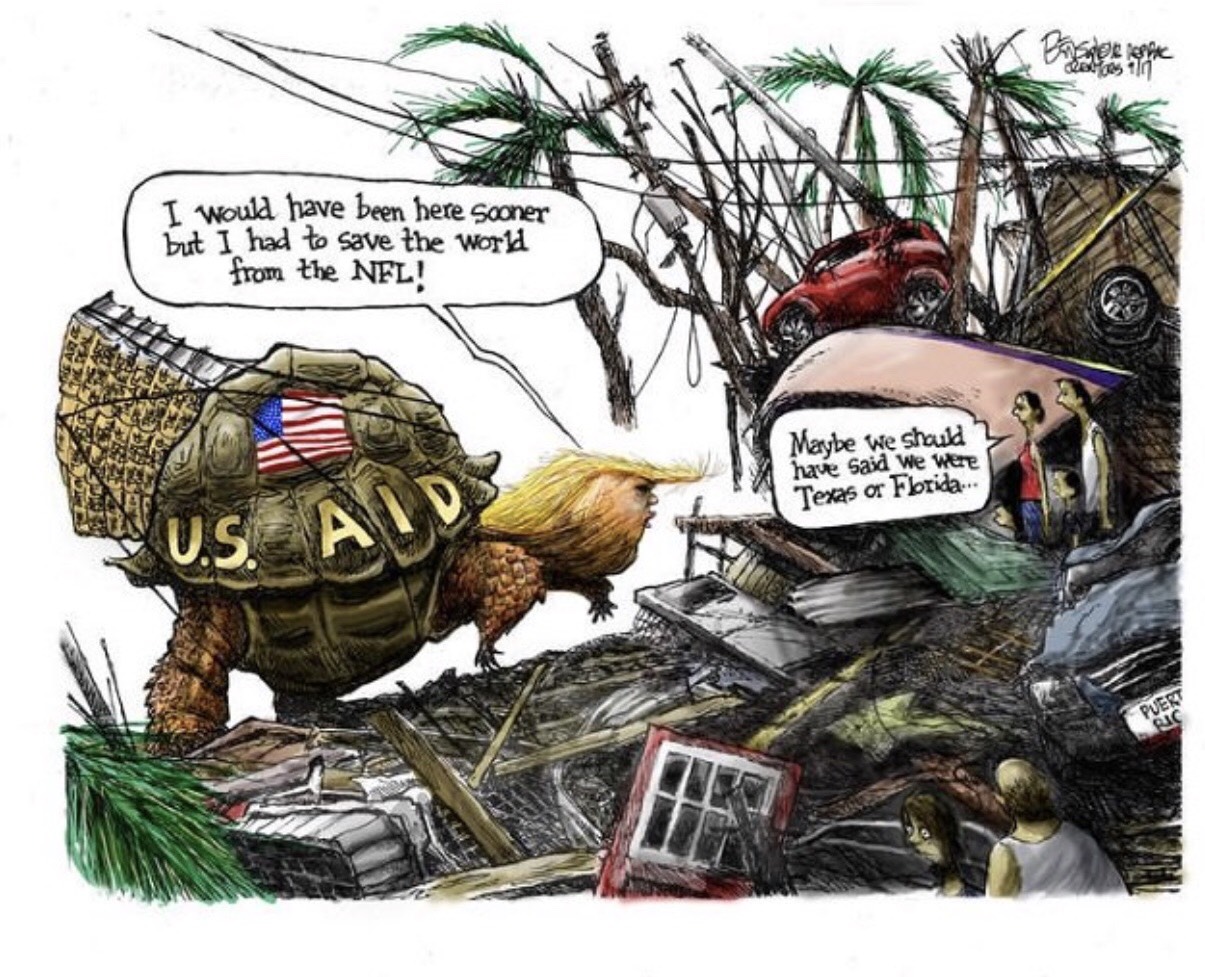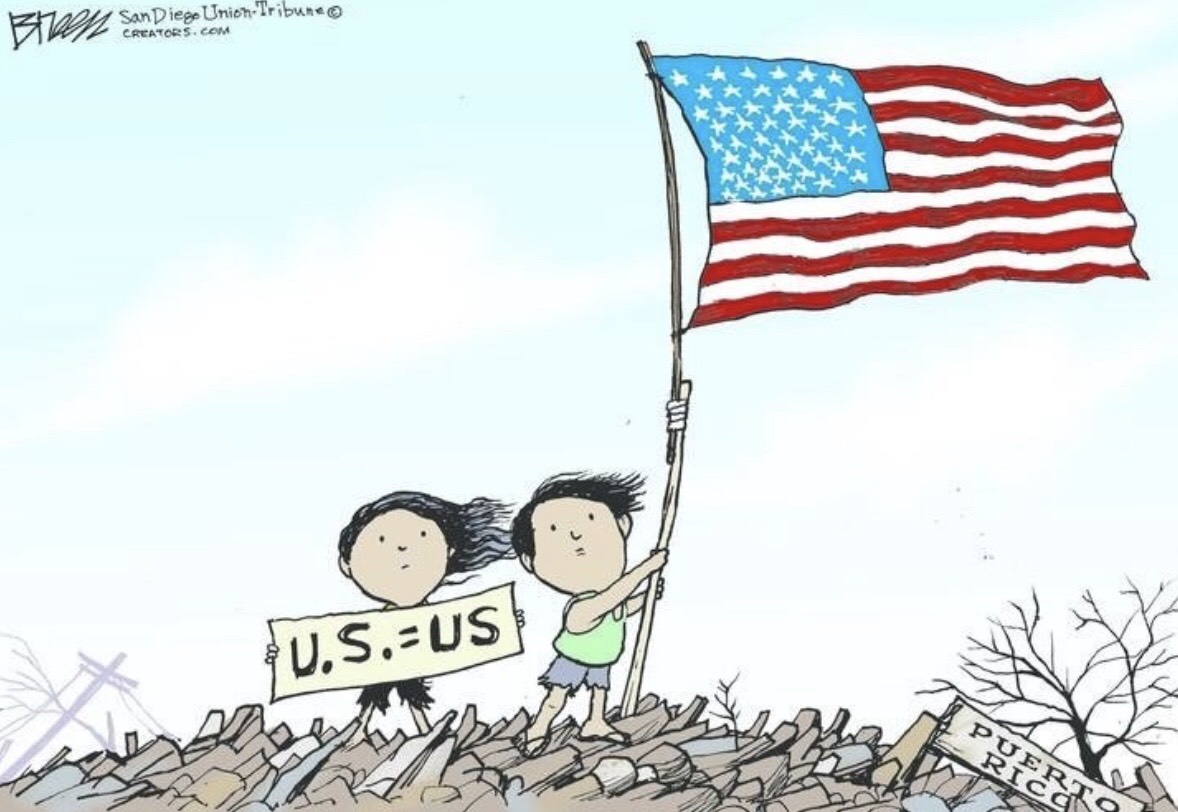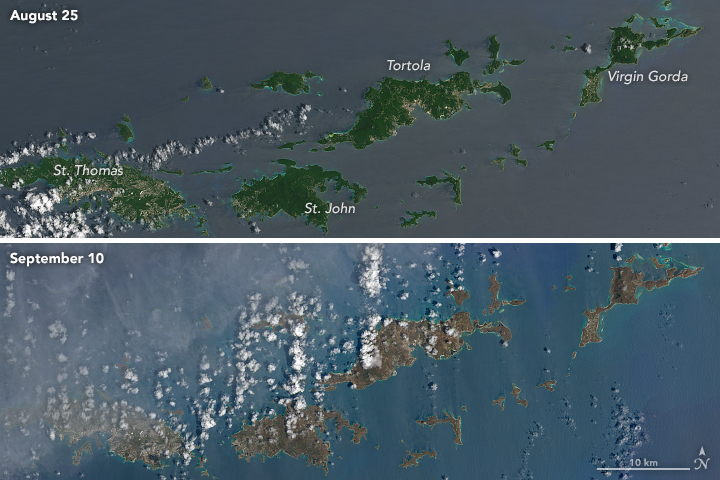
Another hurricane. Massive devastation. The inevitable loss of life.
Hurricane Irma’s catastrophic wrath made landfall in the Caribbean in late August, following the devastation of Hurricane Harvey. By the first week of September, the dangerous Category 5 storm had already left its mark on the area, including the U.S. Virgin Islands, Turks and Caicos, St. Martin, Anguilla, Cuba, Puerto Rico, the Bahamas, Antigua and Barbuda, St. Barts, and the British Virgin Islands. With an escalating death toll of 44, Irma has officially been deemed a force not to be reckoned with. Not only has the hurricane wreaked havoc on the islands’ infrastructure, but its effects on the economy are becoming painfully apparent. Widespread looting across various islands has raised security concerns amongst survivors who have been stripped of their homes and forced to live under a compromised electrical infrastructure without any food or water.The storm has exposed various disparities amongst the humanitarian relief response strategies between the well-equipped United States and the lone countries of the Caribbean struggling to survive. These discrepancies offer great insight into the region’s lack of sufficient programs in place to counteract the impact of Hurricane Irma.

A CRY FOR HELP
The unspoken disaster lies in the relief effort plans, or lack thereof, to combat the horrific ramifications of Hurricane Irma in the Caribbean. While government officials work on gathering resources and emergency supplies to distribute, the locals stress over a lack of swift responses and allocation of more resources. Veronica Woods, a frustrated hurricane survivor from the U.S. territory of St. John says that “the response was not quick enough and the response was not strong enough. We are not Americans on foreign soil, we are Americans on American soil. That’s the bottom line—people are forgetting that, and people are forgetting us.” Now, it should be noted that the hurricane response and recovery in the Caribbean is in direct contrast with the relief efforts to help well-protected regions in the United States such as Florida after it was struck by Hurricane Irma and Texas and Louisiana after Hurricane Harvey.

DESTRUCTION AND DEVASTATION
Heavy winds have severely damaged homes and businesses, which has put people out of work while simultaneously preventing them from purchasing everyday basic needs, such as groceries, personal hygiene products, or even a simple blanket to keep warm. Due to the storm, the region has almost completely lost all forms of power and communications.
Looting has become more prominent on each island now that it has been struck by the hurricane. The intensifying storm created scenes of pillaging rooted in despair. Irma broke through doors, shattered windows, and flooded the streets. This left local stores and businesses immensely vulnerable to theft and vandalism. Locals are worried about their security and fear walking on the streets in the wake of the natural disaster. More specifically, in St. Martin, there have been reports of “lots of looting.” Although the “military is trying to control chaos,” on St. Martin, people remain uneasy about their own safety. On the French side of the island, however, French authorities have imposed security protections and precautions through the strategic placement of 500 gendarmes (armed French police officers) with helicopter reinforcement. To further maintain post-disaster order, France has enforced a 7:00pm-7:00am curfew with future plans of sending additional reinforcements in the coming days. On the Dutch portion of the island, the Dutch government has assured assistance through the delivery of emergency food and water supplies and has bolstered reinforcements to almost 500 military personnel. While the people of the Caribbean search for means of survival, they have been forced to look to unconventional and illegal resources out of an extreme sense of desperation. These extreme measures can be seen in Puerto Rico, where San Lorenzo residents have been forced to walk through high flood waters, across the Manati river, for supplies since the hurricane destroyed the only bridge over the river. With dwindling food and water supplies, victims in San Lorenzo have also resorted to collecting spring water and using it to bathe, drink, and cook with.

UNFORTUNATE CIRCUMSTANCES
Conversely, the affected areas in Florida, Texas and Louisiana did not have to endure the effects of such a disaster to such an extent due to the strong humanitarian relief system composed of the joint efforts of the U.S. government, non-profit humanitarian organizations, and local groups. In Texas and Louisiana, Hurricane Harvey’s flood waters displaced around 13 million people; however, relief efforts were immediately set in motion as Congress approved a sizeable emergency relief package of $15 billion dollars while the Federal Emergency Management Agency (FEMA) distributed a whopping $376 million. On-the-ground recovery support to minimize Harvey’s desolation was fueled by local and national humanitarian organizations, such as the American Red Cross who has contributed shelter supplies for over 50,000 victims and the Southern Baptist Disaster Relief whom of which assisted up to 60,000 victims. Similarly, in Florida, FEMA has approved $92.8 million in aid for Hurricane Irma survivors, along with the assistance of various humanitarian efforts.
Now that Hurricane Irma has devastated Puerto Rico and the U.S. Virgin Islands, the U.S. federal government has invested much less at a slower response time compared to their disaster relief investments in the states of Texas, Louisiana, and Florida. The disaster recovery between the United States and its territories in the Caribbean further exacerbate the unjust and growing disparities in distributing aid to helpless victims in Puerto Rico and the U.S. Virgin islands.
Unsuccessful efforts, in response to Irma, could also be attributed to a weak medical care system in response to a large-scale emergency, as seen in the United States in the aftermath of Hurricane Katrina. After Katrina hit, victims were unable to receive medical treatment for their physical injuries and didn’t have access to prescription drugs as the federal government’s health care policy set restrictive eligibility rules. Further, provisions for keeping hospitals running and a system for recruiting and organizing volunteers were not set in place at the time in the United States. The systemic collapse in medical care enabled U.S. policymakers to reevaluate their plans for combating the immediate effects of natural disasters with a specific focus on access to medical care. After the system-wide failure, the U.S. federal, state, and local governments learned from their mistakes and implemented a new, much more organized system for providing access to medical care, as can be observed in relief responses to the aftermath of Hurricane Harvey. Therefore, hurricane victims in the Caribbean region may be experiencing a similar systemic failure in not having access to sufficient or adequate medical care.
With limited resources and a lack of systemic response strategies, the future of the Caribbean islands may seem dark. Fortunately, combating the devastation of Hurricane Irma quickly and effectively remains a possibility, given the territorial contiguity and shared government between the two regions.
Featured Image Source: Creators Syndicate





Be First to Comment